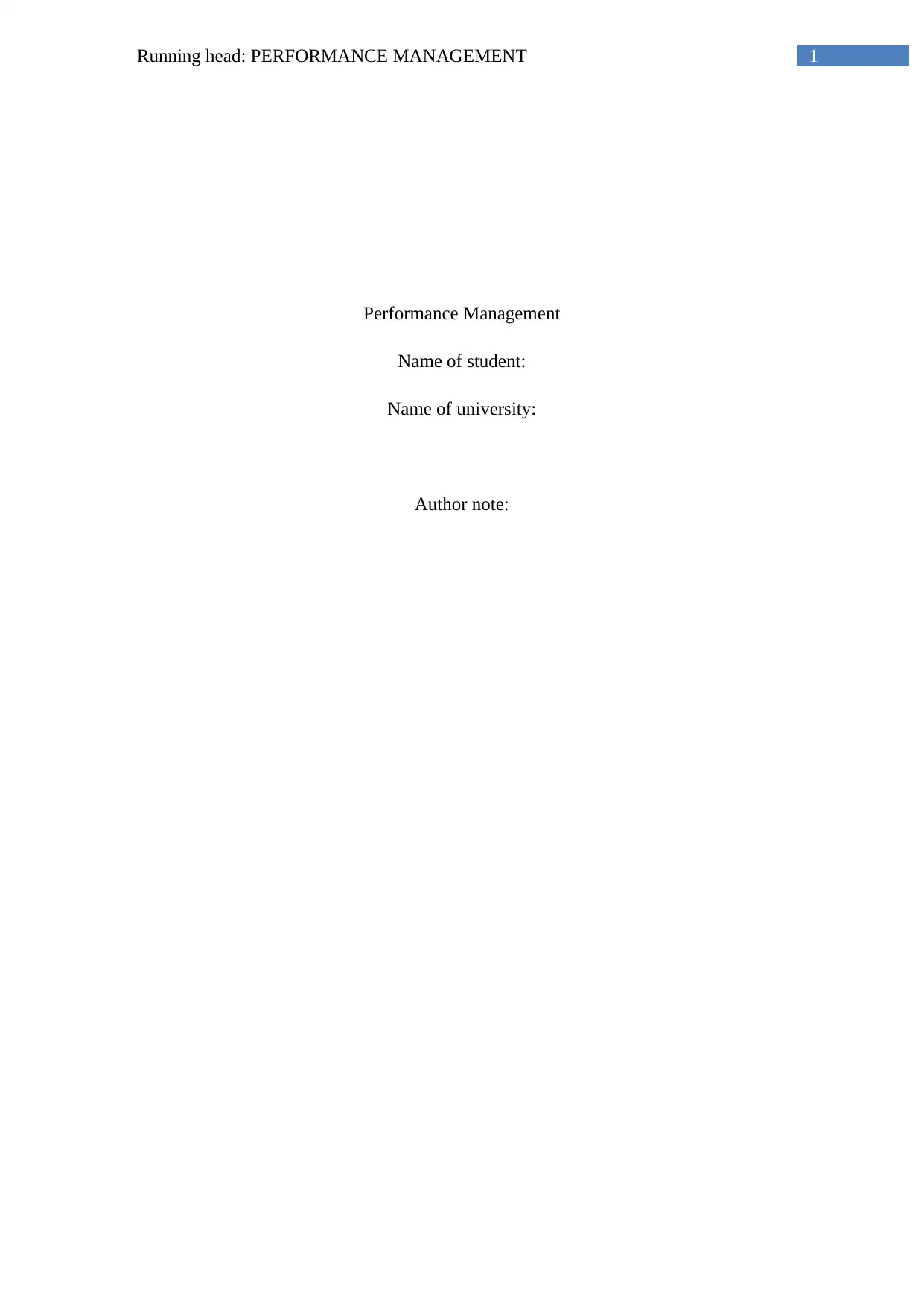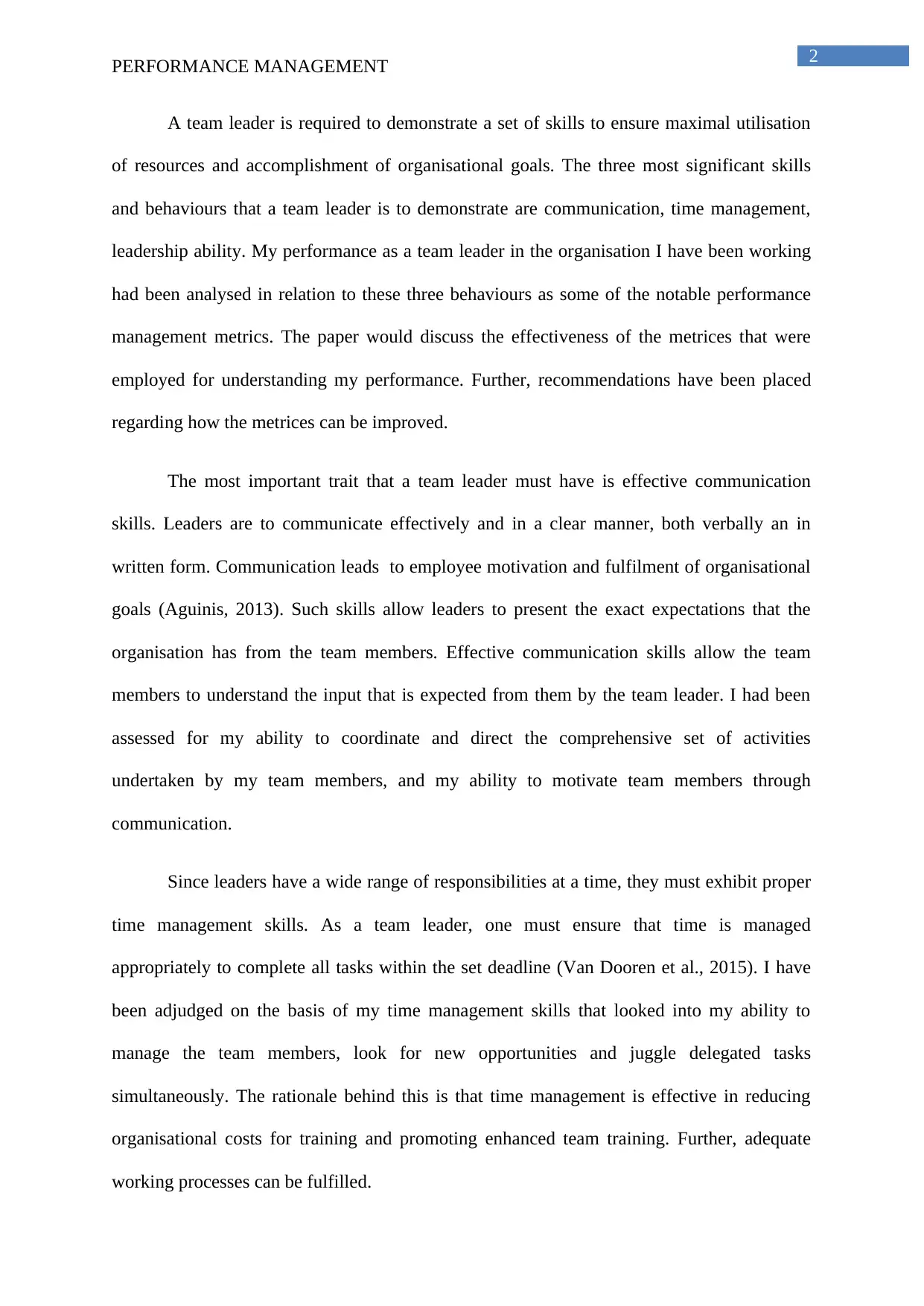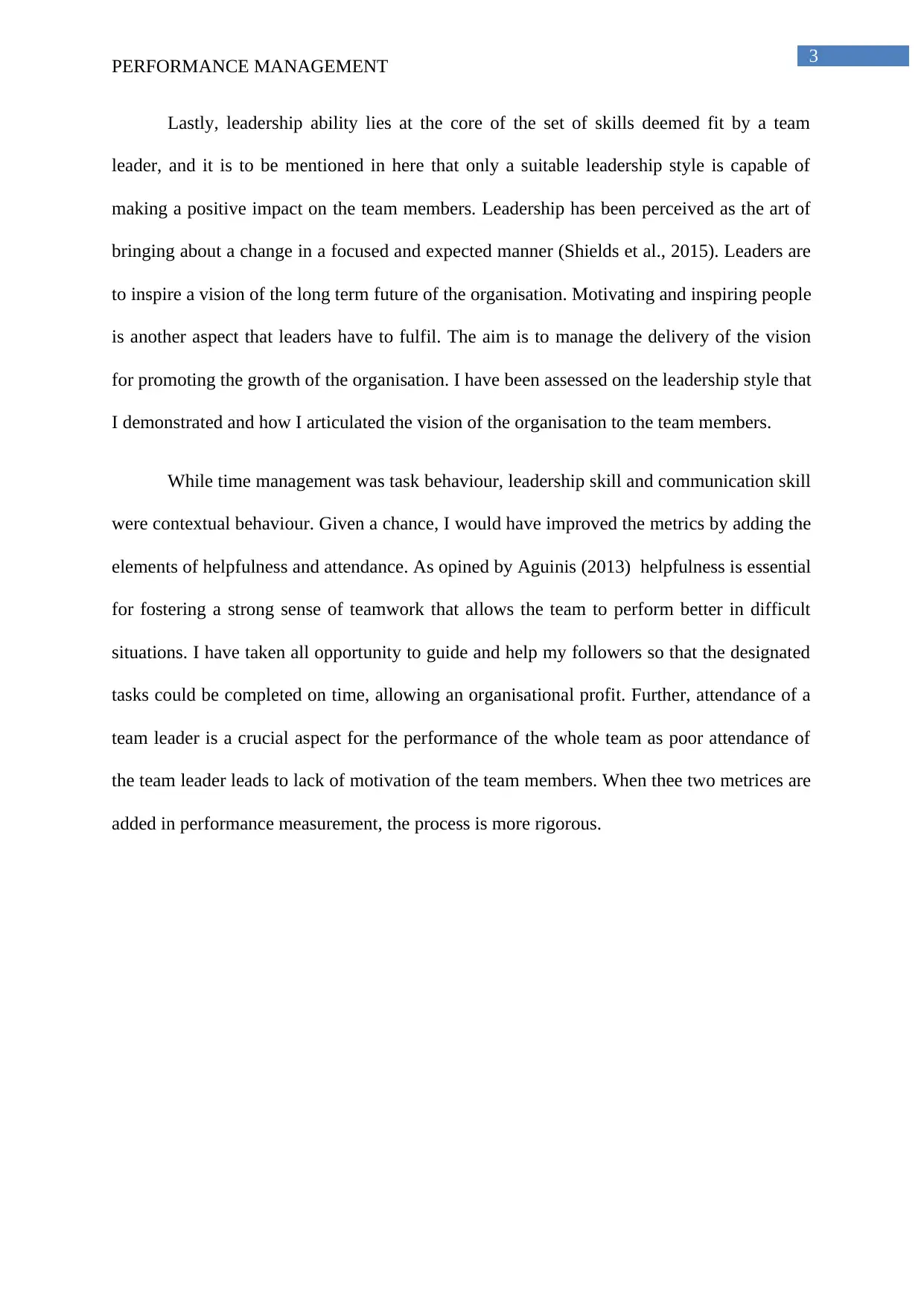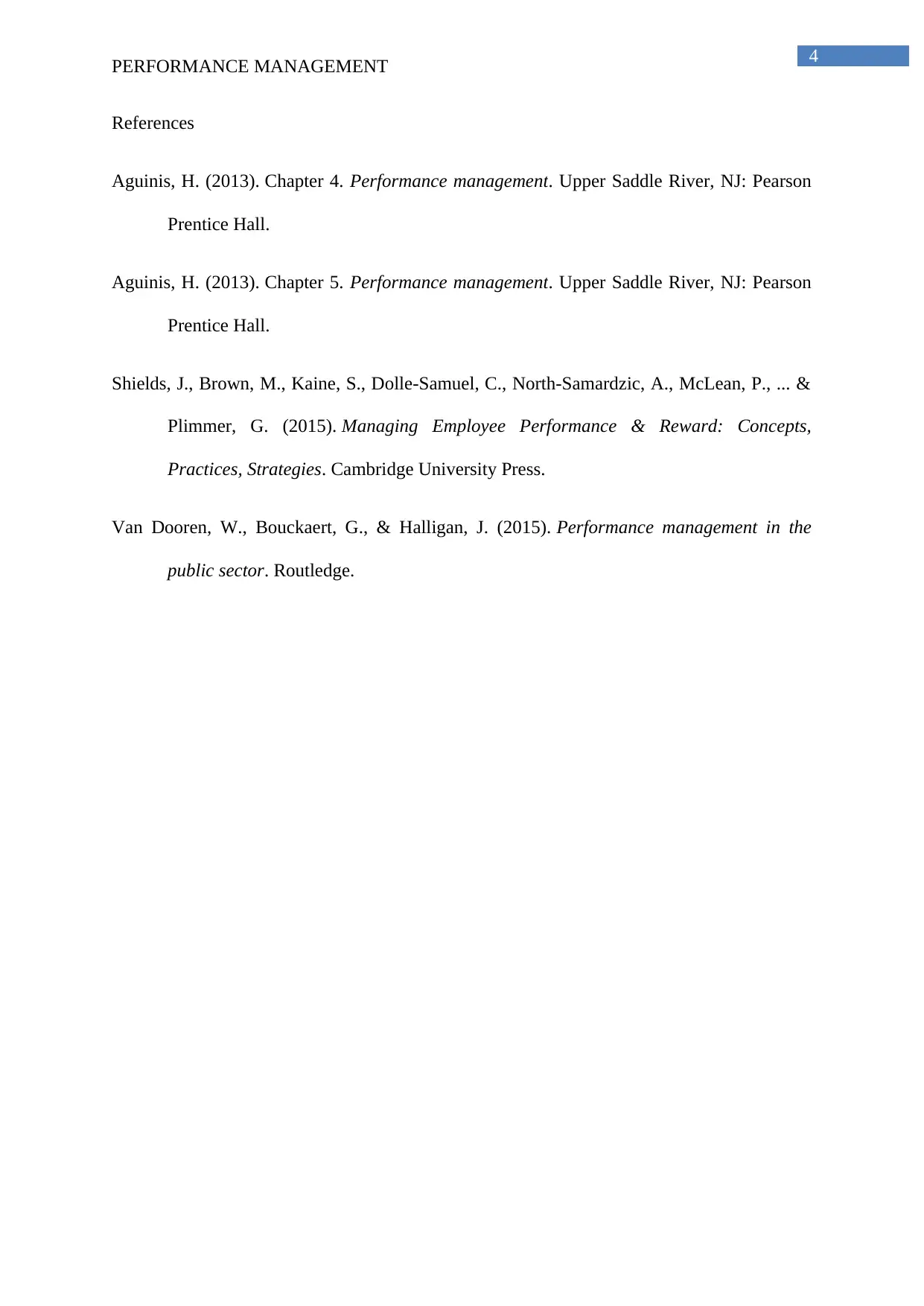Performance Management Analysis: Team Leadership Skills Evaluation
VerifiedAdded on 2020/04/21
|4
|770
|54
Homework Assignment
AI Summary
The assignment examines the essential traits of a successful team leader, emphasizing effective communication, time management, and leadership abilities as pivotal skills. It discusses how these competencies lead to enhanced employee motivation and fulfillment of organizational goals. The document assesses the author's performance on coordinating team activities, managing time effectively amidst various responsibilities, and demonstrating suitable leadership styles that inspire change and articulate vision. It highlights the importance of contextual behavior like communication and leadership while recognizing task-oriented aspects such as time management. Suggesting improvements in metrics by incorporating helpfulness and attendance underscores a comprehensive approach to performance evaluation. The reference materials include works by Aguinis, Shields et al., and Van Dooren et al., providing theoretical frameworks for understanding performance management.
1 out of 4











![[object Object]](/_next/static/media/star-bottom.7253800d.svg)